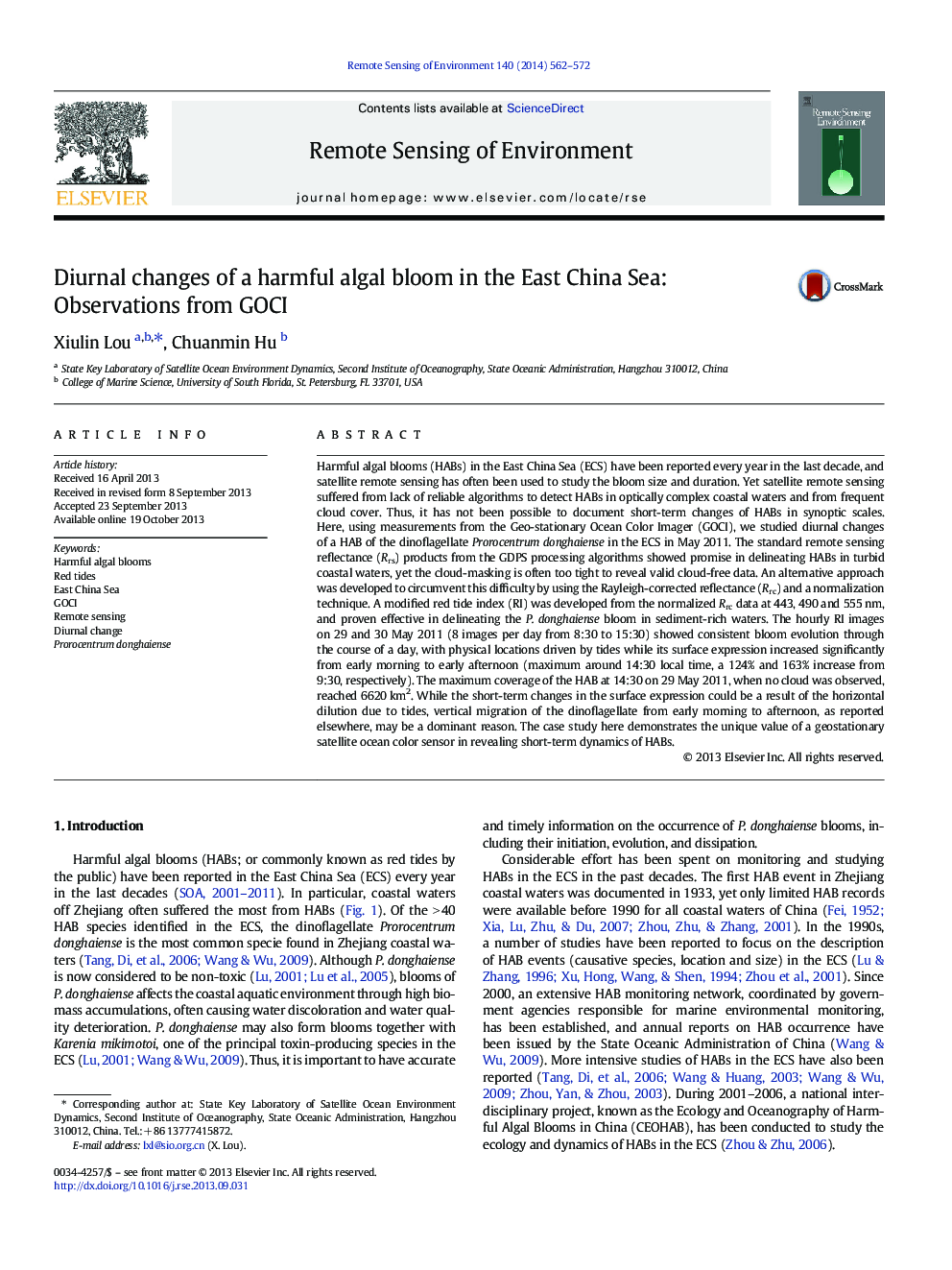| کد مقاله | کد نشریه | سال انتشار | مقاله انگلیسی | نسخه تمام متن |
|---|---|---|---|---|
| 6347061 | 1621260 | 2014 | 11 صفحه PDF | دانلود رایگان |
عنوان انگلیسی مقاله ISI
Diurnal changes of a harmful algal bloom in the East China Sea: Observations from GOCI
دانلود مقاله + سفارش ترجمه
دانلود مقاله ISI انگلیسی
رایگان برای ایرانیان
کلمات کلیدی
موضوعات مرتبط
مهندسی و علوم پایه
علوم زمین و سیارات
کامپیوتر در علوم زمین
پیش نمایش صفحه اول مقاله

چکیده انگلیسی
Harmful algal blooms (HABs) in the East China Sea (ECS) have been reported every year in the last decade, and satellite remote sensing has often been used to study the bloom size and duration. Yet satellite remote sensing suffered from lack of reliable algorithms to detect HABs in optically complex coastal waters and from frequent cloud cover. Thus, it has not been possible to document short-term changes of HABs in synoptic scales. Here, using measurements from the Geo-stationary Ocean Color Imager (GOCI), we studied diurnal changes of a HAB of the dinoflagellate Prorocentrum donghaiense in the ECS in May 2011. The standard remote sensing reflectance (Rrs) products from the GDPS processing algorithms showed promise in delineating HABs in turbid coastal waters, yet the cloud-masking is often too tight to reveal valid cloud-free data. An alternative approach was developed to circumvent this difficulty by using the Rayleigh-corrected reflectance (Rrc) and a normalization technique. A modified red tide index (RI) was developed from the normalized Rrc data at 443, 490 and 555Â nm, and proven effective in delineating the P. donghaiense bloom in sediment-rich waters. The hourly RI images on 29 and 30 May 2011 (8Â images per day from 8:30 to 15:30) showed consistent bloom evolution through the course of a day, with physical locations driven by tides while its surface expression increased significantly from early morning to early afternoon (maximum around 14:30 local time, a 124% and 163% increase from 9:30, respectively). The maximum coverage of the HAB at 14:30 on 29 May 2011, when no cloud was observed, reached 6620Â km2. While the short-term changes in the surface expression could be a result of the horizontal dilution due to tides, vertical migration of the dinoflagellate from early morning to afternoon, as reported elsewhere, may be a dominant reason. The case study here demonstrates the unique value of a geostationary satellite ocean color sensor in revealing short-term dynamics of HABs.
ناشر
Database: Elsevier - ScienceDirect (ساینس دایرکت)
Journal: Remote Sensing of Environment - Volume 140, January 2014, Pages 562-572
Journal: Remote Sensing of Environment - Volume 140, January 2014, Pages 562-572
نویسندگان
Xiulin Lou, Chuanmin Hu,